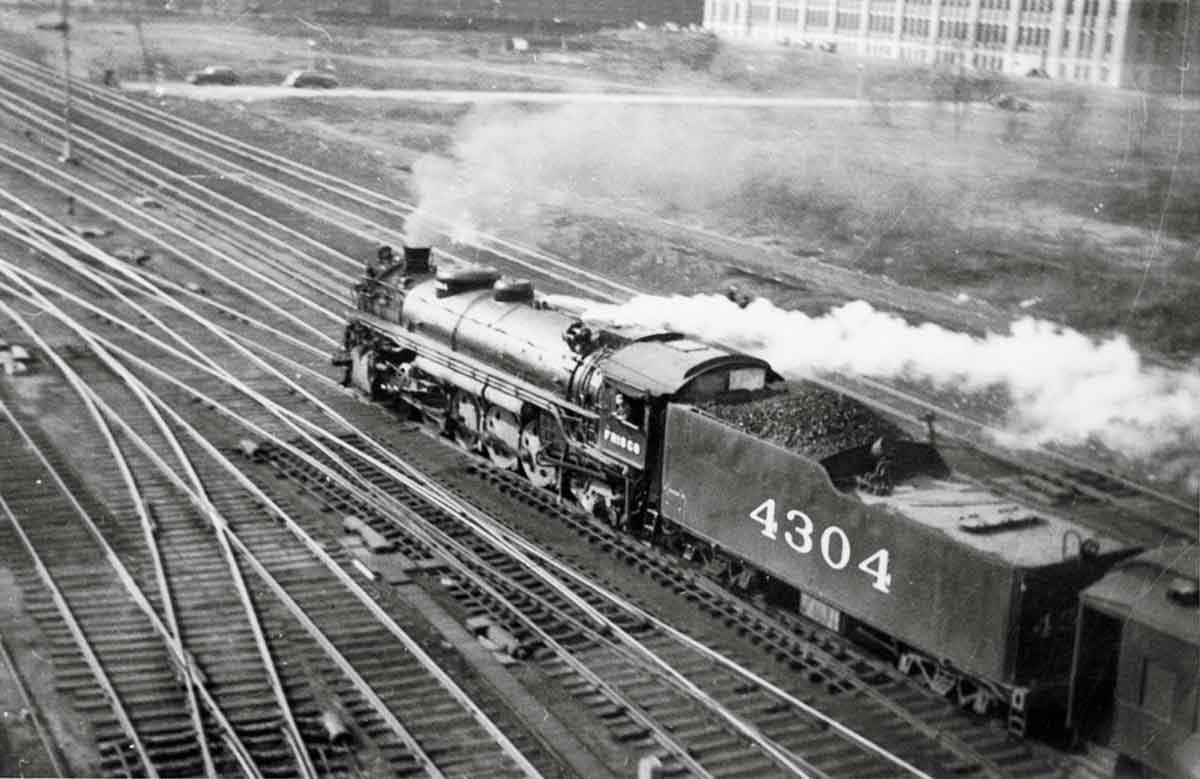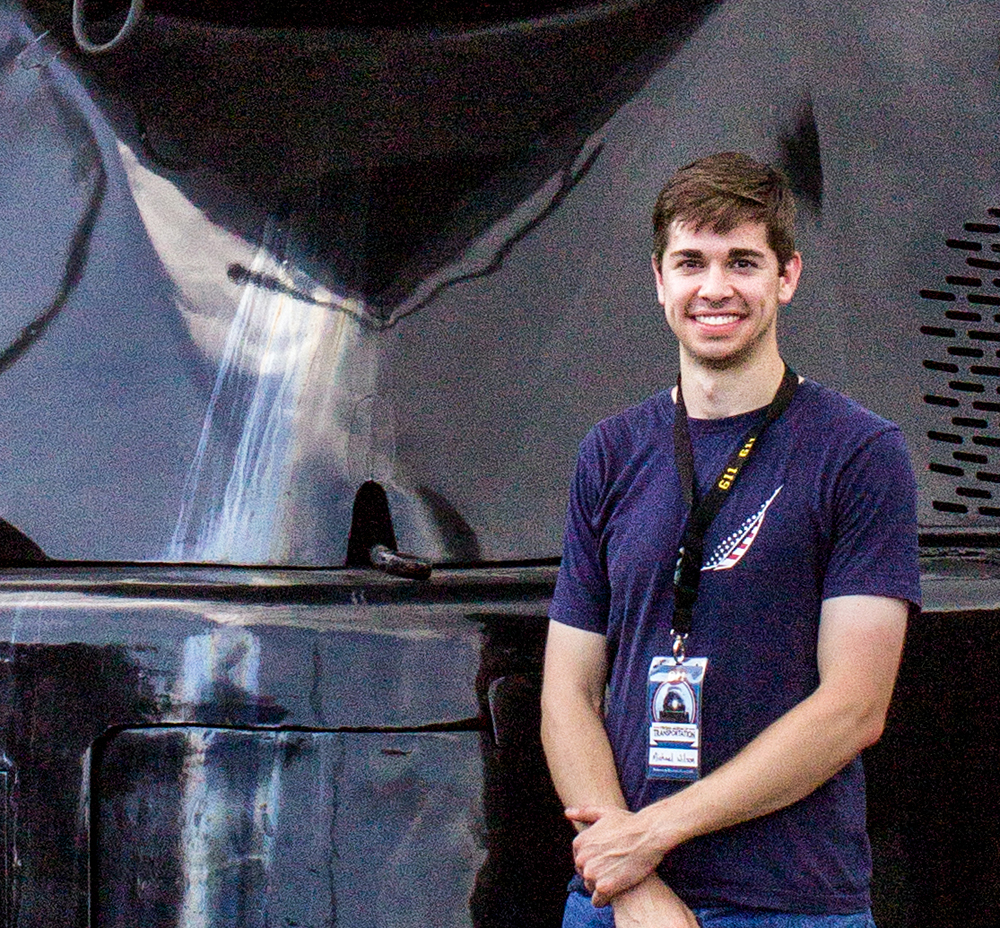One of the engines, No. 4310, was later converted to burn oil and reclassified as a passenger engine, complete with the gold numbers and striping commonly applied to Frisco passenger power. This story is about why this might have come to be.
I had just finished junior high school in 1946. We were living in Fort Scott, Kans., where my dad worked as a tank truck man for the Frisco. Fort Scott was the first crew change point south of Kansas City and where the engines were serviced and took on water. It was summer, and my favorite pastime was going down to the depot to watch the passenger trains come and go. One evening while waiting for No. 105, the southbound Kansas City-Florida Special, I saw on the station trainboard that the train was quite late, but I waited anyhow.
When the Special finally pulled in behind one of the Frisco’s beautiful 1500-class 4-8-2s, I heard one of the Kansas City crewmen say they had trouble with an injector and couldn’t get enough water into the boiler to make any speed. The Fort Scott crew cut off the engine and backed it down to the roundhouse, and when they came back with the replacement locomotive, I was surprised to see that it was a 4300-class freight engine. I had never seen a coal-burner on any Frisco passenger train.
Even at age 13, I was an experienced train-watcher, and I sure noticed that when the train pulled out of the station headed for Springfield, Mo., the 4300 accelerated the train a lot faster than the 1500s or the big 1060-class 4-6-4s that sometimes handled the train. Even though World War II was over, it was still a time of heavy passenger traffic, and I often counted 15 or 16 heavyweight cars on the Special, making it one of the heaviest on the system. Leaving Fort Scott southbound, there’s a long 1 percent grade. We could hear the exhaust of the 4300 as she went up that grade. We knew the engineer, trying to make up time, had the throttle wide open because she was really moving . . . faster than I’d ever heard any train go up that hill.
A couple of days later we got word that evening’s run to Springfield was the fastest ever. This news did not surprise me!
Could this incident have been the catalyst that led to the conversion of the 4310 to a passenger engine? Perhaps, especially since the converted 4310 was assigned to the Kansas City-Florida Special, the very train we saw a 4300 handle so well.
First published in Winter 2010 Classic Trains magazine.
Learn more about railroad history by signing up for the Classic Trains e-mail newsletter. It’s a free monthly e-mail devoted to the golden years of railroading.















I was too young to have taken part in any railroading adventures here in the States, but I was over in Germany during the 50s, and went on leave up to Copenhagen, Denmark, four different times. It was about a 20 hour train trip each time, and one time I decided to sit outside in the open-air observation car. I only did that once, for reasons that you might imagine: I was pelted with hot cinders and ash, all over my face and clothes, and it didn’t take me long to see all that I wanted to see from the observation car.
I’m not even sure it would have been much better if we had been behind a diesel engine, either, because whipping along at 45 or 50 mph, out in the open, does not bode well, what with all the flies and insects swirling about.
I missed out on the opportunity to have experienced any of the thrills of railroad life, even though I do remember, as a little kid in Tennessee, sitting out in back of my Grandma’s house, on the side of a hill, and looking over the valley to a steam train coming around the mountain – which had to be at least a mile away – and I, being a very little kid – made the fist-pumping action of pulling the horn chain, and the engineer had to have seen me, even that far away, because he let out with a mighty blast of the steam horn, which thrilled me beyond words!
In steam days, and for quite a while after diesels took over, heat was supplied, naturally enough, by a steam line that ran through the train, with the steam of course coming from the locomotive boiler. Electricity for lights and other functions was provided by individual generators on the cars that were driven by belts from an adjacent axle. Early air conditioning was provided by ice, with the cool air distributed by fans.
Where did these trains get ‘hotel’ power from? Same for heat, and if they had it, air conditioning? I’m used to diesels either running the motor at high speed just to keep up power, or having a separate motor and generator for that. But how did steam engines handle this? You’d think a freight engine would be missing this.
Your story about the 4300s reminds me of the first time I saw the station at Fort Scott. It was the summer of 1941 and my parents and I journeyed to Kansas City on a short connecting train from Springfield with a coach that was to be attached to the Firefly when it arrived from Oklahoma City. It was the first time I had seen the streamlined Firefly in action. In 1939 the Frisco converted three 1910 Pacifics into torpedo-nosed streamliners, then displayed them around the system before placing them in Kansas City-Oklahoma service as the Firefly. My second grade class got out early one day so we could go to the depot and see one of the engines with three streamlined cars parked on a siding. Before the field trip, the teacher had us draw pictures of what we thought the train would look like. I drew a picture of a train with a streamlined diesel locomotive and was disappointed when I saw the real thing was a steam engine, even though it was a flashy one. So I got to ride behind one on my first trip to Kansas City. I even remember the number of the switch engine that attached our car from Springfield, No. 3735. It was the first time I had seen an 0-6-0, since all the switch engines in Springfield were Consolidations. My dad was an office supervisor for the Frisco in Springfield, with a career that spanned almost 50 years when he retired in 1958. I don’t remember seeing any 4300s in passenger service, but I do remember seeing 4400s along with the new Baldwin-built 4500s on the trains from St. Louis during the heavy wartime traffic days of the 1940s.